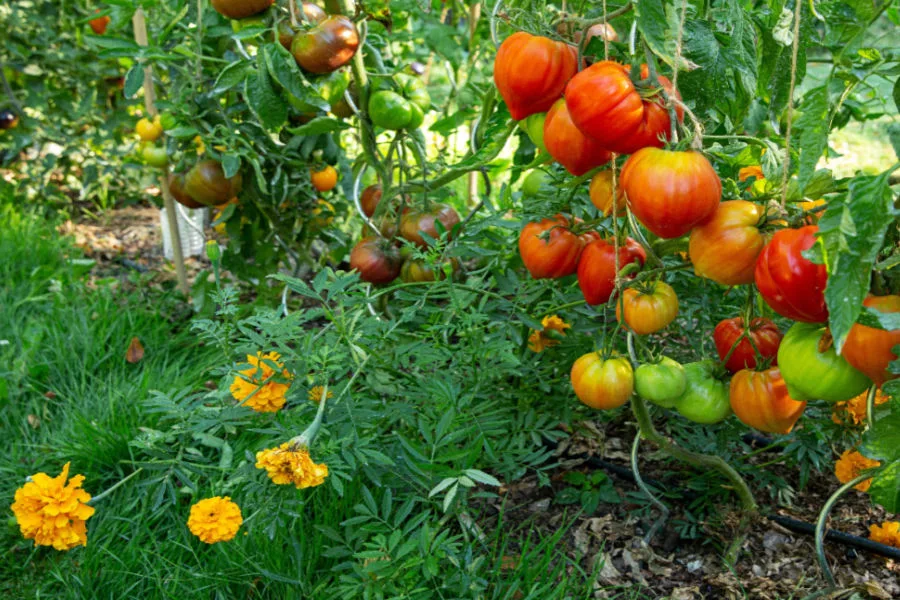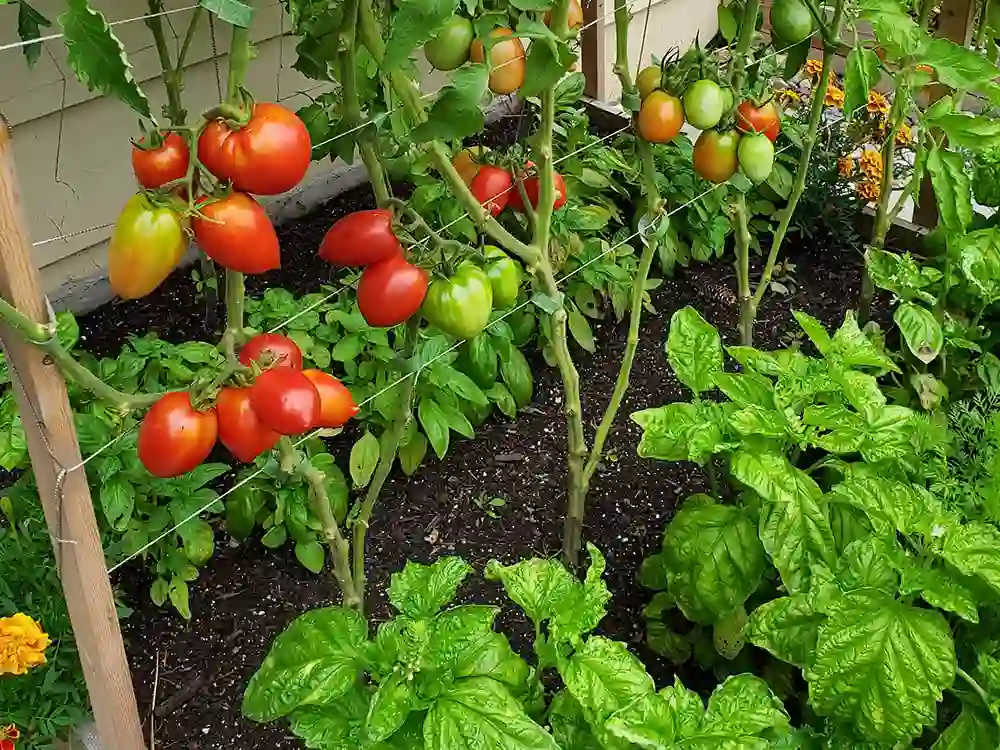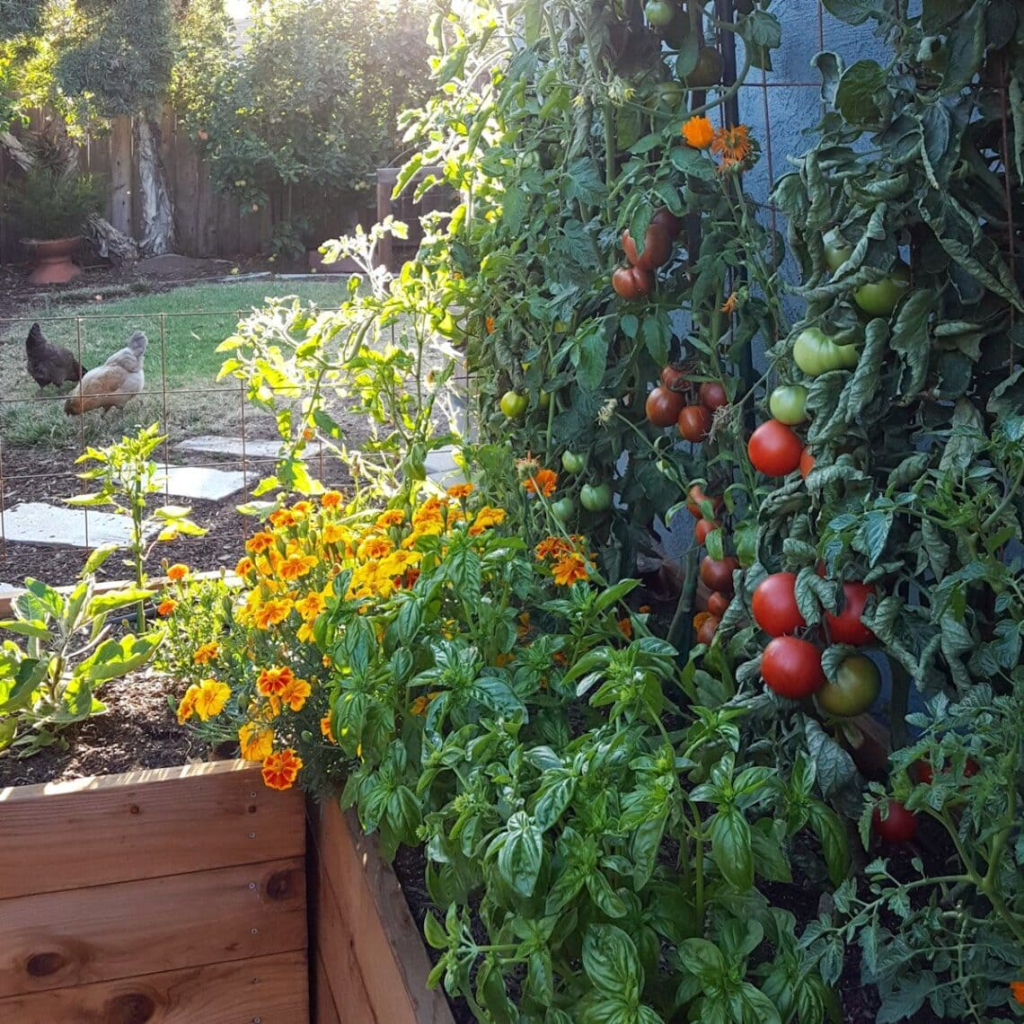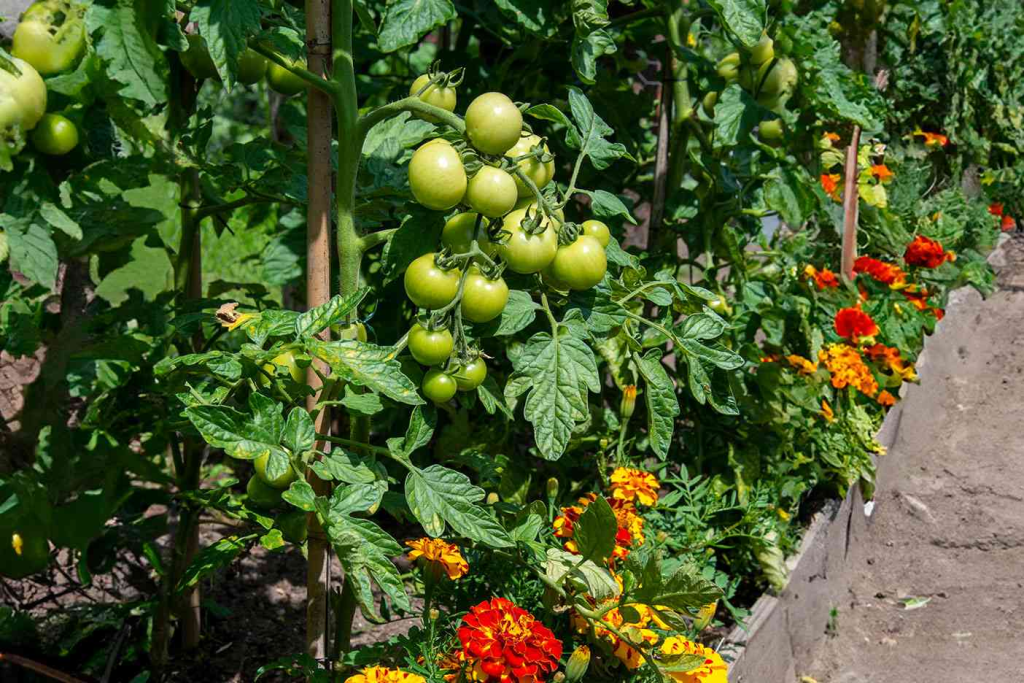
Build tomato and pepper beds that work with nature. Put basil, marigolds, alyssum, and borage to work for pest control and reliable pollination. We’ll teach you the poor plant pairings to skip, and how to keep a checklist style chart for spacing and chores. This guide will also show you the importance of layering in mulch, rotating crops, and pruning lower leaves so that your plants stay healthy.
Best Companion Plants for Tomatoes and Peppers
Tomato and pepper beds become smarter when neighbors do their own part. Some of the best companion plants for tomatoes and peppers include basil, marigolds, sweet alyssum, and borage. Thoughtful companion planting helps to reduce pest pressure by confusing insects and also feeding predators that stay around.
Many growers tend to rely on companion plants that are known to repel garden pests, such as using marigolds to manage nematodes. Use of flowers such as alyssum and borage round out a pollinator-friendly and edible landscape plan, which provides full support to fruit set through steady blooms.
Why Companion Planting Works for Tomatoes and Peppers

Tomatoes and peppers enjoy companion planting when flowers and herbs add variety to the bed. It becomes harder for pests to find hosts when they encounter mixed plant scents and shapes. This helps to build natural pest resistance that reduces the incidence of outbreaks. Diverse roots help in improving soil health over the season by feeding microbes, improving aggregation, and boosting water and nutrient cycling.
The presence of flowers around the crop also attracts bumble bees that vibrate blooms, thus enhancing fruit set in tomatoes and peppers in most gardens. All of this helps to increase biodiversity in gardens, thus creating a stable system that allows plants to handle stress better and still produce. Regular blooming throughout the season keeps beneficial insects present.
Top Companion Plants That Repel Pests
Basil belongs close to tomatoes and peppers. Pairing basil with tomatoes helps to add a powerful scent that can confuse thrips. A border of French marigolds offers pest control, especially where root-knot nematodes have been an issue in the past.
Beds that are set with garlic can leverage it as a natural repellent, which helps to push soft-bodied pests away from shoots that are still tender. When these are used together, they help to repel garden pests while also bringing helpful pollinators that keep fruiting steady. 
Pollinator-Friendly Edible Garden Plans

You can put together a pollinator-friendly and edible landscape plan by edging tomato and pepper rows with basil, thyme, and oregano. Plant flowering herbs such as borage, dill, cilantro, and sweet alyssum and group them in small pockets to keep pollinators coming around all through the season.
Many of these plants earn a second job in edible landscaping, so their leaves or petals can be clipped for the kitchen without any negative effect on the bed. Some very helpful tomato and pepper yield tips include keeping blooms close to fruit clusters and giving vines a gentle shake on still days, since bee activity and vibration help to set fruit. 
Avoiding Poor Plant Pairings
Smart companion planting maintains the balance in the bed and cuts down on stress. One of the most important rules is to avoid planting fennel with tomatoes because fennel releases chemicals that inhibit nearby growth.
Brassicas such as cabbage and broccoli are poor plant pairings, because they are heavy feeders and the roots compete and leaves cast shade. Plant brassicas in a separate bed so they don’t become incompatible garden plants for nightshades.
Designing Raised Beds with Companion Plants

Clean lines make it easy to care for a raised bed every day. Plan your raised bed garden design with tomatoes on stakes, peppers in front, and a center aisle for quick harvests. Make use of companion planting by planting basil and marigolds near entries while using a pollinator strip running along one side.
In between posts, you can drop quick lettuce or spinach to create efficient small-space gardens until vines fill in. Angle supports so that your tomato and pepper garden beds breathe well and are less susceptible to disease pressure.
DIY Companion Planting Chart for Beginners
A single page can keep tomatoes, peppers, and their helpers organized from seed to harvest. Map out a companion planting chart that has columns for bed, sun hours, spacing, and then list basil or marigold next to tomatoes. Add in a guide row that is beginner-friendly and mentions what you should avoid, such as fennel and tight potato pairings.
Build a planting plan for your tomato and pepper that groups supportive herbs nearby and places flowers for pollinators down the aisle. Finish with some DIY gardening ideas such as color codes for companions and a weekly box for notes on pests and pruning.
Seasonal Care for Companion Gardens

Tomatoes and peppers thrive when the plan shifts with weather, growth, and bed conditions. Smart seasonal garden care takes advantage of small tweaks such as pruning to achieve better airflow and waiting till after heat breaks to carry out new transplants. You should make it a habit to mulch your tomato beds so that they can hold even moisture during dry spells.
Keep herbs and flowers close for good companion planting, because this attracts insects that are beneficial. Make the most of crop rotation tips by moving nightshades to a new spot for several seasons to cut down soilborne issues. Incorporate fast greens in between young transplants, and then clear them as vines fill out to keep the bed productive.
Conclusion: Growing Healthier Tomatoes and Peppers with Companion Plants
The right neighbors help tomatoes and peppers handle pressure from insects while keeping growth on track. That effect comes from companion planting, which puts supportive plants in the right slots. Reach for the best companion plants for tomatoes and peppers that keep nectar and pollen available to beneficial insects.
Use the best companion plants that repel garden pests with the idea that attraction of predators and scent cues do a lot of the work. Tie everything together in a pollinator-friendly edible landscape plan so flowers and food crops play well all season.
Choose two companions and share what gets planted in the comments below!

